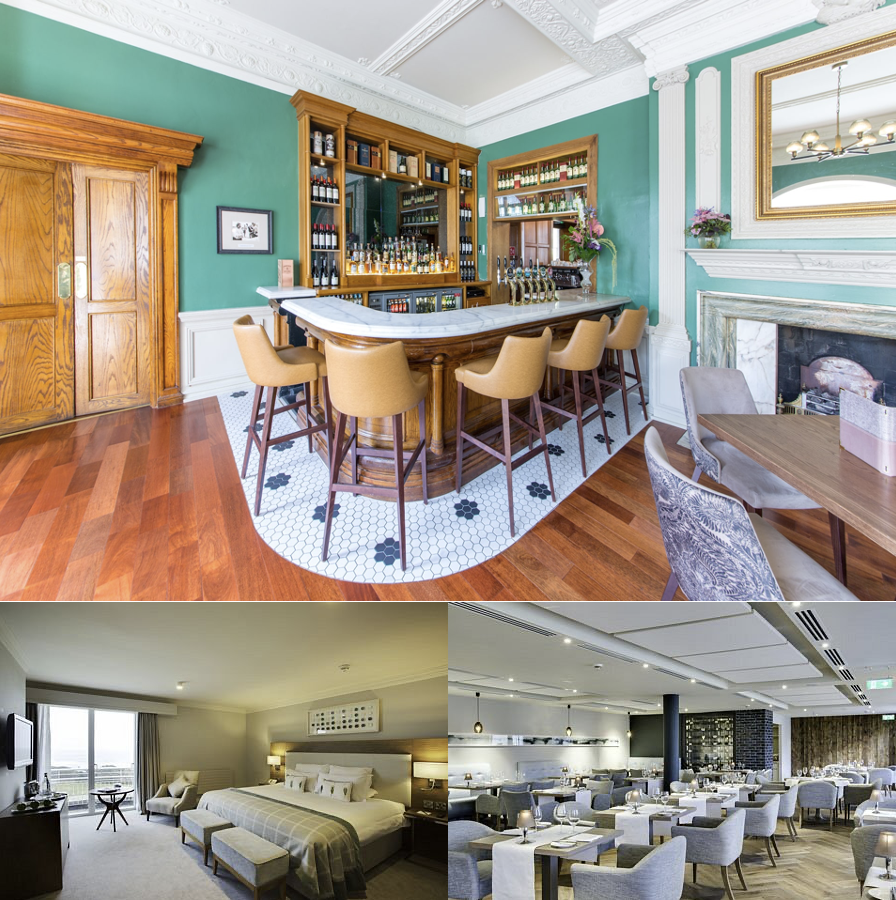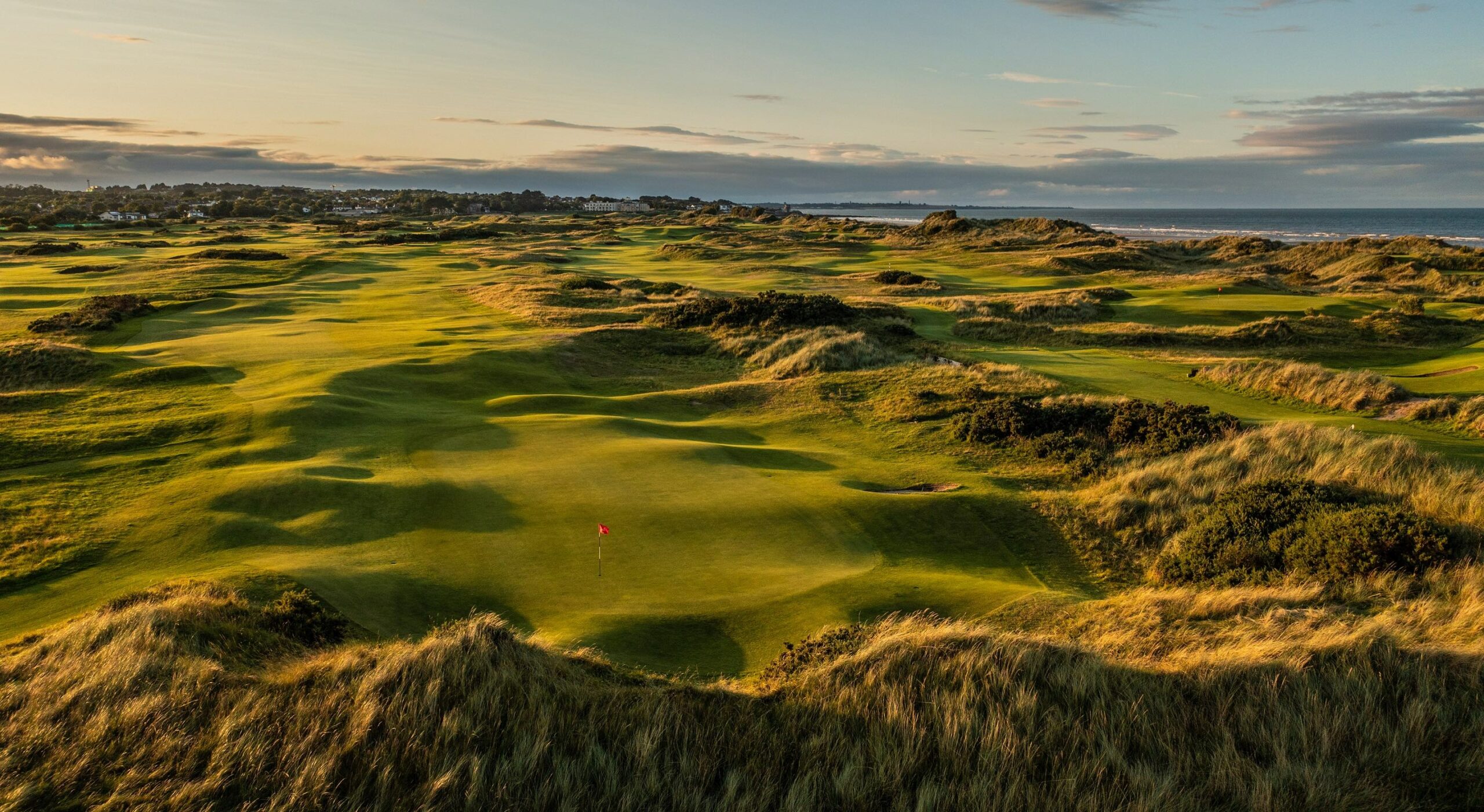GBN Associate Editor Nick Bayly visits Portmarnock Resort, formerly known as Portmarnock Hotel & Golf Links, and finds the North Dublin venue much changed, with a new owner, new name, and a recently redesigned championship course that serves to elevate the experience in more ways than one.
Some 25 years ago – before smartphones and Google Maps were a thing – I took a taxi ride from St Ives train station to Titleist’s European headquarters in the town of the same name which is located deep in the heart of rural Cambridgeshire. During the course of the 10-minute journey I casually asked the driver whether he ever picked up passengers at the station who thought they had arrived at the famous seaside resort in north Cornwall. “More often than you’d think,” came his reply, quick as a flash. He then went on to reveal that most of those that had found themselves 350 miles off-course were foreign tourists who had simply asked at a ticket office for the train to St Ives – mainly with the intention of visiting the famous regional outpost of the Tate art gallery – without thinking that there was another town of the same name somewhere east of Huntingdon in the deepest Fens.
A memory of this conversation passed fleetingly through my mind as a taxi whisked me from Dublin Airport in the general direction of Malahide, a well-to-do suburb of Ireland’s capital that is home to two golf courses that, to all intents and purposes, have the same name.
One the one hand you have Portmarnock Golf Club, a near 130-year-old institution whose highly rated 27-hole links sits on a peninsula overlooking the Irish Sea. Host of 14 editions of the Irish Open, including the very first in 1927, and the Walker Cup in 1991, it’s an extremely traditional private members’ club that only allowed women members to join as recently as 2021. And, on the other hand, or rather 500 yards north, you have, or had, Portmarnock Hotel & Golf Links, a naïve young upstart whose Bernhard Langer-designed course only opened in 1995. The latter is attached to a sizeable hotel which is hugely popular with the ‘stay-and-play’ brigade, while also accommodating a local membership.
My Irish taxi driver said that he’d never once taken someone to the wrong Portmarnock, largely on the basis that anyone playing golf at the hotel course was generally also carrying overnight luggage, but also because he made doubly sure to ask precisely before setting off. And even if someone did turn up at the wrong venue, it would only take a few minutes to correct the mistake, and not the six-hour rerouting that those visitors to St Ives endured.
All that aside, the Portmarnock Hotel & Golf Links’ recent change of name to the not all too dissimilar Portmarnock Resort & Jameson Golf Links may confuse some people for a wee while longer. As is often the case, the reason for the double rebrand is a change of ownership. Out went US real estate investment group Kennedy Wilson – who bought the venue in 2014 – and in came the Sandman Hotel Group, a family-owned, Canadian-based hospitality business whose portfolio comprises more than 50 hotels and 140 restaurants across Canada, the United States and the UK, and, in case you’re interested, also owns the Dallas Stars NHL Hockey Club. Sandman bought the hotel and golf course in 2019 for €50 million, which is no chump change, a transaction that was made doubly difficult when the pandemic struck just months later bringing hospitality and global travel to an instant halt.
Having weathered the Covid storm, the new owners have wasted no time in doubling down on their investment, spending many more millions over the last three years carrying out a major alteration of the original Bernhard Langer designed golf course and further upgrading the hotel’s four-star facilities.

The course redesign – it’s far more than a renovation – was masterminded by Jeff Lynch, director and senior architect at (re)GOLF, and his team on a site inextricably linked to the famous Jameson whiskey dynasty – a family who played an instrumental part in introducing the game of golf in Ireland. Back in the 1850s, John Jameson built his own private course on the site which would have been used by friends and family coming from Scotland. Three of the Jamesons, including John, are laid to rest in the graveyard to the right of the first hole, and the old family home – St Marnocks – now forms part of the hotel at the Portmarnock Resort.
The new owners have sought to tap into this piece of local history by renaming the course – so here we are, Jameson Golf Links. One the main weaknesses of the original course – no offence, Bernhard – was that it sat on low lying land that gave golfers no real concept of being by the sea. Visitors were offered only a brief glimpse of the vast sandy beach that stretches just a few yards from the course, while outstanding views to Dublin’s city skyline and uninhabited island off the coast known as Ireland’s Eye, were also largely hidden from view.
With new eyes came a new ambition, and the new owners set Lynch and his design team the task of redesigning the course to enable golfers to take in more of these wondrous sights. To make that happen vast quantities of earth and sand had to moved on those holes closest to the sea in order to lift the land in key areas. It was massive structural undertaking that came with plenty of risks and at no small cost, but one that everyone involved with the project got fully behind.
Given their location away from the coast, the first seven holes have been very much left as they were, and they are none too shabby in their own right, but they feel somewhat pedestrian by comparison to the remaining 11, as it’s only when you get to the eighth hole does evidence of the changes come into play and the excitement begins to ramp up as the aforementioned views are revealed and the course begins to take on a more linksy feel.
The previously dog-legged eighth has been transformed into a straighter par four following the development of a new fairway, green complex and grass pathways. The 9th hole is a beautiful par 3 that plays directly towards the sea and can be anything from a short iron to a hybrid depending on which way the wind is blowing. The green is set on three tiers, with the low point nestling in the centre, but due to the generous funnel-like design of the putting surface, a tee shot left or right of centre should find its way back to the hole.

The par-4 10th is another memorable hole that brings the dunes and elevation changes into play. A large dune dominates the view from the tee, while a marker post in the distance provides the ideal line for a hole that swings from right to left. But it’s only when you reach your ball – which is hopefully in the middle of the fairway – that you realise that it’s all about the second shot on this hole, as the green is basically an upturned bowl that will repel all put the most perfectly struck approach – as I discovered to my cost during my three rounds on the course.
After the 147-yard par-3 11th, whose false front will no doubt catch out many who under-club, the course ramps up another notch at the par-5 12th, which served as a par-four on the old card. Now stretched to a challenging 545 yards off the white tees, it reaches its climax at a green complex that will leave you scratching your head and tearing your hair out at the same time. Described as a ‘volcano green’, it’s basically a mountain with a flag on top with crampons required to scale its vertiginous inclines. With a trio of bunkers right of the putting surface, even reaching the short stuff brings little comfort, with the deep and contoured green making two-putting a challenge. After you’ve holed out for the inevitable double bogey it’s worth catching your breath and admiring the fabulous 360-degree view from what is one of the highest points of the course.
And the changes keep on coming. The once par-five 13th is now a very challenging 470-yard par four, which more than lives up to its stroke index 1, while the former par-four 14th has been transformed into a fearsome near 600-yard par five, which, in a headwind, never seems to end. A bogey here felt like a well-earned par.
The 15th has been shortened from a par four to a 150-yard par three and is one of the more gettable short holes, while the steep climb up to the tee on the 16th reveals a slight dogleg 400-yard par four, with the fairway down below meandering between thick rough towards a green protected by several deep bunkers. The 17th, as it stands, is a long par 3 measuring over 200 yards from the back tees to a raised green, but work is already underway to transform this hole into a short par 4 which will serve to soften the closing stretch, but only slightly.

The final hole is a 400-yard par four that requires a tee shot down the left side of the fairway to set yourself up for a second shot into a green surrounded by towering dunes and protected by three bunkers. It’s a suitably dramatic finish to a round that is not short on excitement and interest, and like any good course it will leave you wanting to come back for more, if only to right some of the inevitable wrongs that were made through your previous lack of course knowledge.
After playing 18 holes with longstanding course manager Fintan Brennan, who knows every blade of grass on the course, it seems that the redevelopment has been warmly welcomed by the membership, and now feel like they have a course to be proud of and one which no longer sits in the shadow or its storied neighbour.

Away from the golf course, those visiting the new-look Portmarnock Resort will also experience a recently upgraded hotel, which blends modern elegance with a fascinating history, encapsulated by the quaint Irish charm of its famed Jameson Bar.
Due to its locality, the resort is a 30-minute journey from the heart of Dublin – provides a perfect base for golfers looking to explore the vast array of world-class links courses along the north Dublin coast – including Portmarnock Golf Club, The Island and Royal Dublin.
For more information on Portmarnock Resort and Jameson Golf Links, visit www.portmarnock.com.

